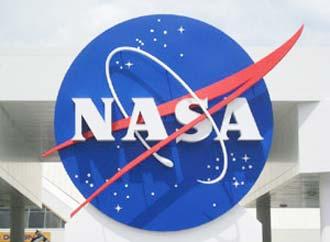Source: Xinhua
05-05-2009 12:14
Special Report: Tech MaxWASHINGTON, May 4 (Xinhua) -- Since its launch last June, NASA's Fermi Gamma-ray Space Telescope has discovered a new class of pulsars, probed gamma-ray bursts and watched flaring jets in galaxies billions of light-years away. On Monday at the American Physical Society meeting in Denver, Colorado, Fermi scientists revealed new details about high-energy particles implicated in a nearby cosmic mystery.
 |
| Since its launch last June, NASA's Fermi Gamma-ray Space Telescope has discovered a new class of pulsars, probed gamma-ray bursts and watched flaring jets in galaxies billions of light-years away. |
"Fermi's Large Area Telescope is a state-of-the-art gamma-ray detector, but it's also a terrific tool for investigating the high-energy electrons in cosmic rays," said Alexander Moiseev, who presented the findings. Moiseev is an astrophysicist at NASA's Goddard Space Flight Center in Greenbelt, Maryland.
Cosmic rays are hyper fast electrons, positrons, and atomic nuclei moving at nearly the speed of light. Astronomers believe that the highest-energy cosmic rays arise from exotic places within our galaxy, such as the wreckage of exploded stars.
Fermi's Large Area Telescope (LAT) is exquisitely sensitive to electrons and their antimatter counterparts, positrons. Looking at the energies of 4.5 million high-energy particles that struck the detector between Aug. 4, 2008 and Jan. 31, 2009, the LAT team found evidence that both supplements and refutes other recent findings.
Compared to the number of cosmic rays at lower energies, more particles striking the LAT had energies greater than 100 billion electron volts (100 GeV) than expected based on previous experiments and traditional models. (Visible light has energies between two and three electron volts.) The observation has implications similar to complementary measurements from a European satellite named PAMELA and from the ground-based High Energy Stereoscopic System (H.E.S.S.), an array of telescopes located in Namibia that sees flashes of light as cosmic rays strike the upper atmosphere.
Last fall, a balloon-borne experiment named ATIC captured evidence for a dramatic spike in the number of cosmic rays at energies around 500 GeV. "Fermi would have seen this sharp feature if it was really there, but it didn't," said Luca Latronico, a team member at the National Institute of Nuclear Physics (INFN) in Pisa, Italy. "With the LAT's superior resolution and more than 100times the number of electrons collected by balloon-borne experiments, we are seeing these cosmic rays with unprecedented accuracy."
